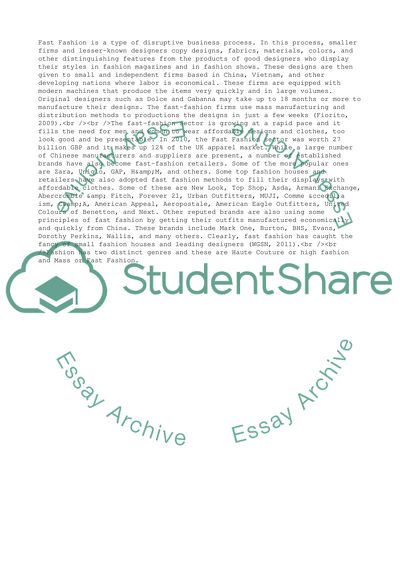Cite this document
(Consulting Report to Start a Fast Fashion Clothing Manufacturing Coursework Example | Topics and Well Written Essays - 2000 words - 1, n.d.)
Consulting Report to Start a Fast Fashion Clothing Manufacturing Coursework Example | Topics and Well Written Essays - 2000 words - 1. https://studentshare.org/management/1785991-consulting-opportunity
Consulting Report to Start a Fast Fashion Clothing Manufacturing Coursework Example | Topics and Well Written Essays - 2000 words - 1. https://studentshare.org/management/1785991-consulting-opportunity
(Consulting Report to Start a Fast Fashion Clothing Manufacturing Coursework Example | Topics and Well Written Essays - 2000 Words - 1)
Consulting Report to Start a Fast Fashion Clothing Manufacturing Coursework Example | Topics and Well Written Essays - 2000 Words - 1. https://studentshare.org/management/1785991-consulting-opportunity.
Consulting Report to Start a Fast Fashion Clothing Manufacturing Coursework Example | Topics and Well Written Essays - 2000 Words - 1. https://studentshare.org/management/1785991-consulting-opportunity.
“Consulting Report to Start a Fast Fashion Clothing Manufacturing Coursework Example | Topics and Well Written Essays - 2000 Words - 1”. https://studentshare.org/management/1785991-consulting-opportunity.


